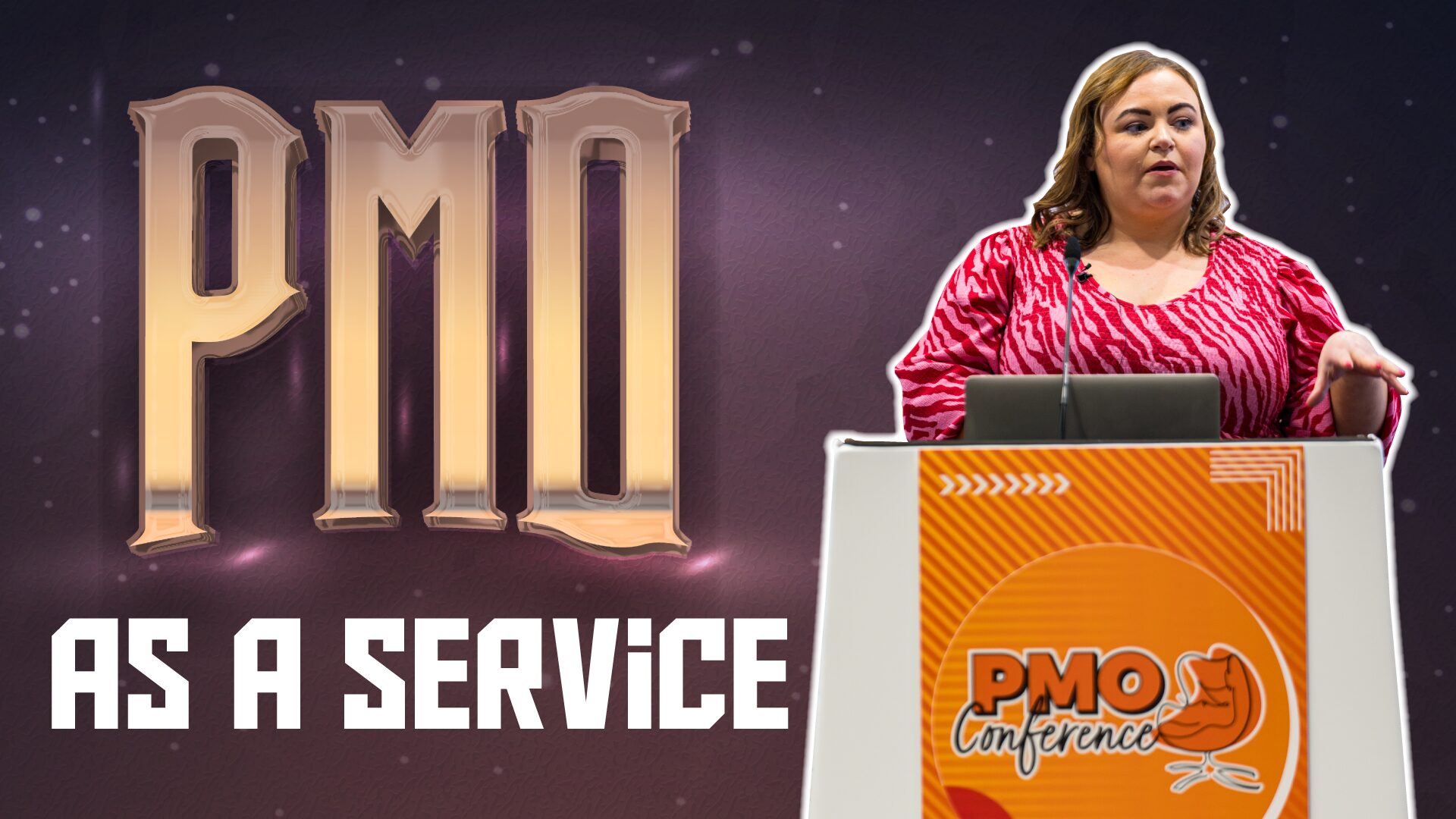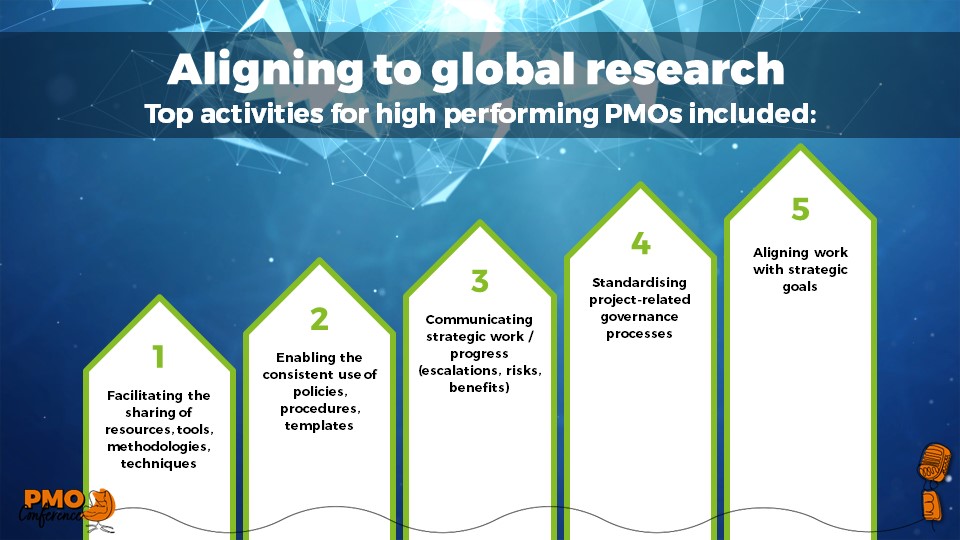Watch back all our PMO Conference sessions
PMO as a Service (PMOaaS) – What is it and How is it Done?
In this session we hear from leading professional consulting firm, Deloitte on ‘PMO as a Service’ and look beyond the buzz surrounding ‘as a service’ to find out what PMOaaS is; why it exists and how it is done.
As more and more PMOs move to the model of offering PMO services to the organisation, PMOaaS, is not just about services to external clients. It is also about offering an alternative model to internal stakeholders too.
You will hear about the PMOaaS model and how you can take the principles, adapt and adopt them for your own organisation.
Deloitte will share their lessons and best practice on how to define, deploy and successfully manage a PMOaaS approach.
During this session you will learn how to:
- Define a service catalogue
- Deploy a scalable PMOaaS model
- Manage the service with measurable KPIs
Recorded Session
Presentation Deck
Download the Presentation DeckSession Summary
 In this presentation, Caoimhe Murphy from Deloitte introduces the concept of “PMO as a service” and explains how turning PMOs into a service can provide value to organisations. She touches on areas such as service catalogue, scalability, and the need to align the PMO with the broader organisational strategy.
In this presentation, Caoimhe Murphy from Deloitte introduces the concept of “PMO as a service” and explains how turning PMOs into a service can provide value to organisations. She touches on areas such as service catalogue, scalability, and the need to align the PMO with the broader organisational strategy.
Caoimhe emphasises the challenges organisations face when their PMOs work in isolation, leading to issues like inconsistent governance structures and inefficient pricing models. She also touches on the benefits of PMO as a service, including improved operational efficiency and reduced costs. Throughout, she shares some real-world experiences and examples, highlighting the pitfalls of taking the “as a service” concept too literally.
Organisations need to be able to define their PMO challenges and consider the broader context of change delivery to understand how PMO as a service can address these challenges. Overall, it provides insights into how organisations can optimise their PMOs to be more effective and responsive to their needs.
Establishing and Managing a PMOaaS
Caoimhe highlighted some key areas for implementing the PMO as a Service model.
- Defining the Service: The initial step is to clearly define what services the PMO will provide and what it won’t. This involves creating a service catalogue to communicate the scope and responsibilities of the PMO. This catalogue helps outline the range of services the PMO can provide to support various business functions.
- Transition Planning: When deploying a PMO as a service, there’s a need for a transition plan. This includes transferring responsibilities, roles and potentially amending job roles. Careful planning, communication, and timing are essential in this phase.
- Communication: Effective communication is crucial at every stage. This involves engaging with leadership, project managers, and all stakeholders to convey the PMO’s value and role within the organisation.
- Branding: Creating a brand for the PMO can be a helpful way to reposition it in the organisation, especially if it previously had a negative reputation.
- Building a Community: Building a community within the PMO team is vital. This includes providing opportunities for team members to learn, share, and bond as a team to foster collaboration and avoid working in silos.
- Piloting and Adapting: The implementation strategy may require adjustments along the way. It’s essential to evaluate the strategy periodically, being open to feedback, and willing to pivot if necessary.
- Lessons Learned: Gathering and sharing lessons learned from the implementation process is crucial to making continuous improvements.
- Service Management: Establishing a service management layer is vital for the seamless operation of the PMO. This includes accountability for the PMO’s functioning, resource management, and performance.
- KPIs: Key Performance Indicators should be both qualitative and quantitative. Regular reviews and feedback surveys help assess the PMO’s effectiveness and identify areas for improvement.
- Continuous Improvement: Creating a roadmap for continuous improvement aligned with the organisation’s strategy is essential. It should be flexible enough to adapt to changing business needs.
- Scalable Resourcing: Planning for resourcing needs over different timeframes, such as one month, three months, six months, and a year, ensures that the PMO can scale its operations as required.
Top Tips for Deploying a Scalable Model
Caoimhe offered several practical tips for deploying a scalable PMO model. These included:
- Conducting an analysis of the current state to identify opportunities for improvement.
- Assessing the capacity and utilisation of the PMO team members.
- Identifying areas where roles might be underperforming or inconsistent.
- Evaluating the potential for offshoring roles to optimise costs.
- Benchmarking PMO processes against high-performing standards.
Managing and Evolving the Service
Finally, Caoimhe highlighted the importance of managing and evolving the PMO service over time. This involves setting measurable Key Performance Indicators (KPIs) to track the impact of PMO activities. Additionally, the PMO service should adapt to changes within the organisation, such as centralisation or decentralisation, and leverage technology and automation for efficiency.
The outcome for Deloitte was significant improvements in the organisation’s PMO and supporting its broader transformation efforts. PMOs play a vital role in facilitating business growth and transformation when they are structured and managed effectively.



